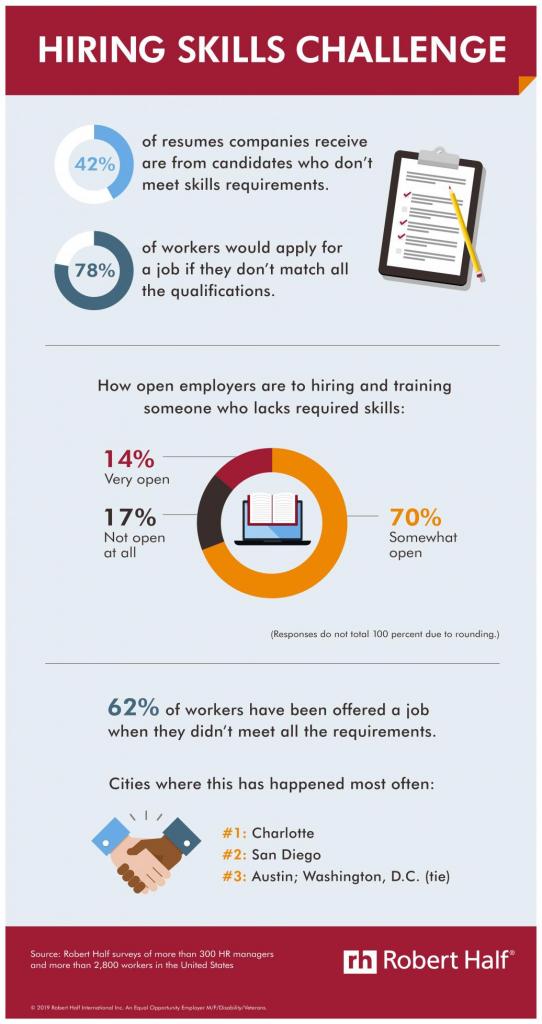How To Apply For A Job You Aren’t Quite Qualified For

Burst/Sarah Pflug
You don’t have to painstakingly make sure you check every box, making sure you meet nearly all of a job’s requirements before applying for the job you want – not in this market. A new poll by Robert Half shows that 78 percent of workers would apply for a job if they don’t match all of the qualifications. Meanwhile, 42 percent of the resumes companies receive are from candidates who don’t meet skills requirements.
That’s not a bad thing: 62 percent of workers have been offered the job even when they didn’t meet all the requirements.
The perfect candidate isn’t always available.
Ladders spoke with Robert Half District President Richard Deosingh about the poll and how it highlighted the current “skills gap” — in a worker’s market, the perfect candidate isn’t always available. Companies are willing to hire someone who doesn’t match nearly all the requirements — and they’re willing to train. Eight-four percent of employers are either “somewhat open” or “very open” to hiring and training someone who lacks the required skills, according to the poll.
The poll’s responses are from over 300 HR managers at U.S. companies with 20 or more employees, and over 2,800 workers 18 years or older, employed in offices in 38 major U.S. cities.
Deosingh says the skill gap is more than likely the result of the tight job market and “very, very low unemployment rates. It’s not necessarily an ongoing thing; it’s dependent on the job market.”

Here’s how to use it to your advantage and vault your way into your next job.
- Look at the job listing’s language. When a candidate is applying, there are ways to tell which requirements are hard-and-fast and which are more of a wishlist for a perfect candidate, Deosingh says. “It all depends on how the job description is written,” he says. If the listing says a qualification is “preferred” versus a “must,” that’s something to pay attention to.
- Mind the gap. Be realistic. When it comes to that 78 percent that would apply for a job that they’re not totally qualified for, he says, there are ways to do it strategically. “They have to be mindful that the gap isn’t so big that they can’t overcome it,” Deosingh says.
- Make up for shortcomings using transferrable skills. “For areas they don’t have exposure with, they need to identify that and use any bit of experiences they have in their background to help accommodate for that gap. Is it an instance where you work in a similar environment and those skills are transferrable?”
- Make sure you meet at least 50 to 60 percent of the requirements before applying. It depends on the job’s seniority and the amount of experience they’re looking for, Deosingh says, but that’s the minimum amount you should shoot for. You might need to be mindful of meeting more, however, as you climb the ladder. “What you don’t want is to misrepresent yourself
In short, it’s never been a better time to apply for a job that’s a bit of a stretch, and the odds are in your favor.
“I’m a firm believer that the ideal candidate that a company is looking to hire isn’t always necessarily available,” says Desosingh. “Companies are aware that it’s a workers market, and that that ideal person isn’t always available, so they have to be flexible with what they’re looking for and have a system in place not only to retain but to train.”
It’s your moment. Go forth and apply.

This article originally appeared on Ladders written by Meredith Lepore.
RELATED
How To Find A New Job Without Actually Applying For Any Jobs
These Are The Best Jobs In 2019, Many Of Which Pay More Than $100K
If You Want To Get Hired, Talk About How Much You Love Your Work











